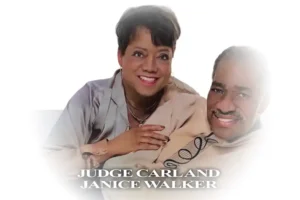By: Chloé Richards
n Houston’s Third Ward, Fifth Ward, and Acres Homes communities, multi-story townhouses stand next to century-old homes, and longtime residents navigate new realities in the places they have called home for generations. While developers say they’re creating affordable housing, these “upgrades” come at a cost, the slow disappearance of historic Black communities that have shaped Houston’s culture for generations.
Houston’s Third Ward, Fifth Ward, and Acres Homes have been pillars of Black history, culture, and community for decades. But with rising property values, rapid new developments, and shifting demographics, these neighborhoods are changing fast, often at the expense of their historic landmarks and residents.
Third Ward: “Black River Oaks”
Third Ward has long been regarded as the “Heart of Black Houston,” a neighborhood filled with places that are significant to Houston’s Black identity. Home to Texas Southern University (TSU), Hous- ton’s only HBCU, Third Ward has nurtured generations of Black leaders and artists, with its cultural and academic influence extending far beyond Houston. Community landmarks, like Unity National Bank—the only Black-owned bank in Texas—have provided economic empowerment, while places like Wheeler Avenue Baptist Church, Third Ward Multi-Service Center, Emancipation Park, and Project Row Houses serve as community landmarks.
Once overwhelmingly Black, the Third Ward’s African American popu- lation has drastically declined, making up just 45% of the area today, down from 71% in 2010, according to the Houston Chronicle. Rising property values and increasing development have changed the landscape of the Third Ward, with luxury apartments and high-rise buildings replacing older homes and small businesses. The closure of institutions like the historic Houston Negro Hospital, later known as Riverside General Hospital, which treated Black patients independently until its closure in 2015, depicts the changes occurring in this neighbor- hood. Despite efforts from community groups to preserve what remains, gentrification continues to push out Black residents and threaten the his- tory, spirit, and pride that define the Third Ward.
Fifth Ward: “The Nickle”
Just northeast of downtown, Fifth Ward, known as “The Nickel,” has a history rooted in resilience and vibrant Black culture. For decades, it served as a major Black business and entertain- ment hub, with Lyons Avenue lined with grocery stores, barbershops, churches, and funeral homes. This was the neighborhood where prominent figures such as Congresswoman Bar- bara Jordan, civil rights activist Mickey Leland, and heavyweight champion George Foreman grew up, and it fos- tered a strong sense of community and pride.
But today, the Fifth Ward is one of Houston’s most economically depressed neighborhoods, facing population decline and gentrification pressures. New luxury developments are appearing alongside long-standing family homes, raising property values and creating concerns of displacement. In 2014, despite objections from local residents, the original Phillis Wheatley High School building, a significant landmark, was torn down. The school, once a centerpiece of Black education in the Fifth Ward, saw a significant shift in demographics and enrollment, a reflection of the changes affecting the neighborhood.
Though many new projects promise affordable options, residents question whether they can maintain the history and integrity of the Fifth Ward amid the rush of development.
Acres Homes: “44”
Located in North Houston, Acres Homes has a unique legacy among the city’s Black neighborhoods. Known for its land sold by the acre, this community was originally developed after World War I to provide afford- able housing to Black families seek- ing homeownership opportunities. Acres Homes has produced notable figures like rapper Slim Thug, former Houston mayor Sylvester Turner, and rapper Paul Wall. While the Third and Fifth Wards are closer to Houston’s downtown “inside the loop,” Acres Homes proudly represents the north- side of Houston.
Over the years, the neighborhood has seen a shift, with a growing Latino population and the construction
of multi-story townhomes, which contrast sharply with the traditional one-story homes. Developers often argue that they’re offering affordable housing options, but the price tags of new developments have raised doubts among locals. With the area’s his- toric significance as a haven for Black homeowners, the pressure of develop- ment threatens the continuity of Acres Homes’ legacy.
The Larger Picture: What Gentrification Means for Houston’s Historic Black Neighborhoods
Gentrification in Houston’s Black communities represents more than just new housing projects or increased property values, it’s a direct threat to cultural heritage, community cohe- sion, and the sense of belonging that has long defined these neighborhoods. For Black residents in the Third Ward, Fifth Ward, and Acres Homes, gentri- fication often brings the possibility of displacement, the deletion of neigh- borhood landmarks, and the loss of spaces that have offered community, identity, and pride for generations.
The stakes are high for Houston’s Black communities as gentrification accelerates.






